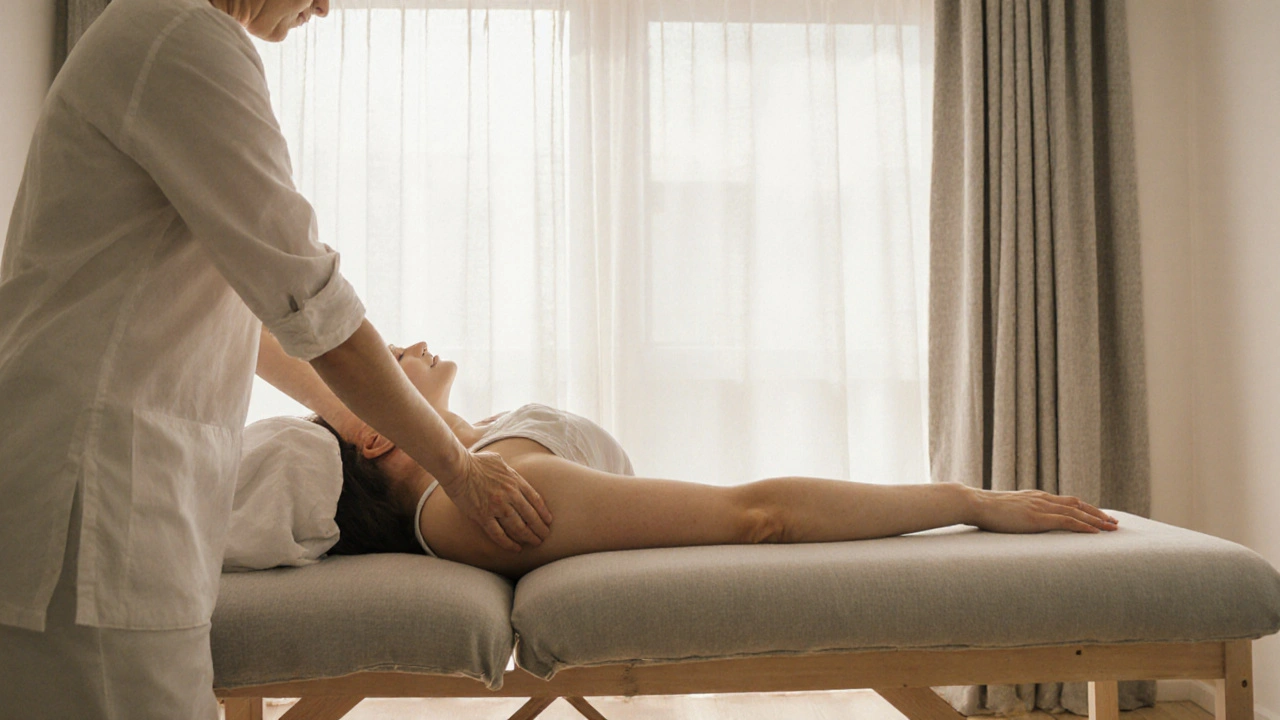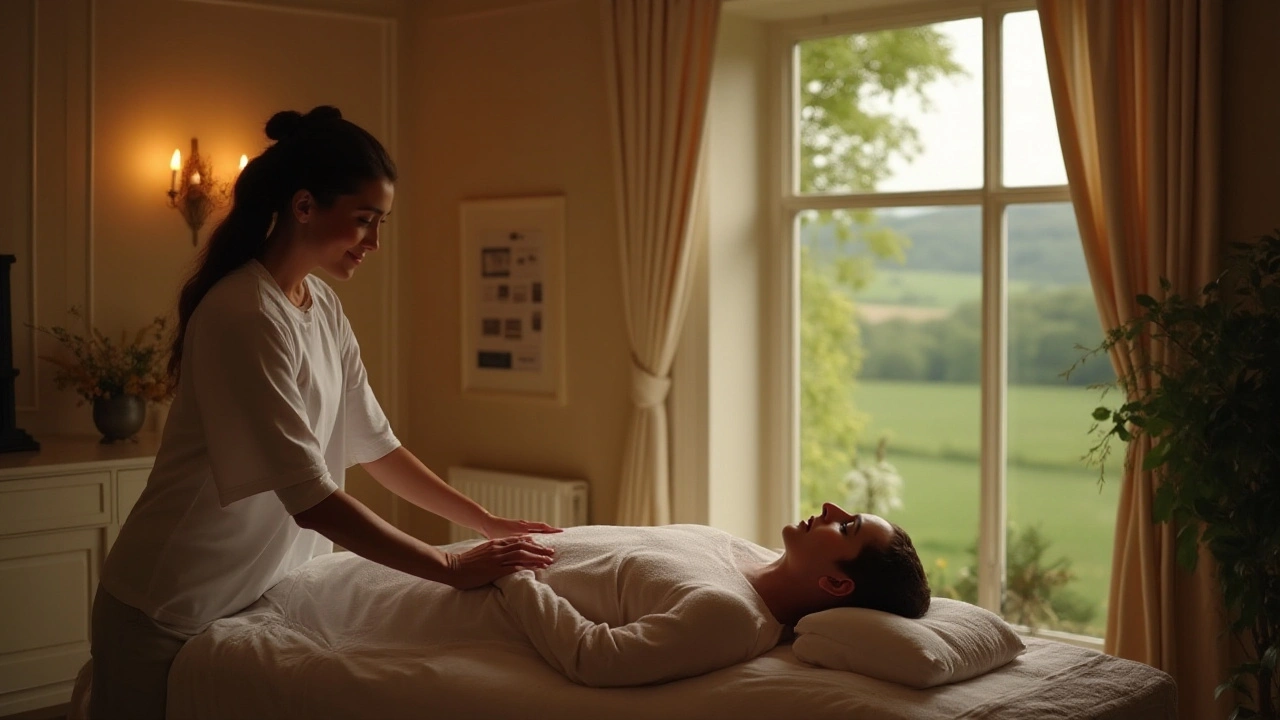Trager Therapy: Gentle Movement to Ease Pain and Free Your Body
Stuck in the same tight spots or tired of short-lived relief? Trager Therapy offers a different path. It uses gentle touch, rocking and guided movement to help your nervous system learn ease. You don’t get a deep, forceful manipulation. Instead, a trained practitioner helps you rediscover painless ways to move.
What is Trager in plain terms?
Trager is a bodywork method developed by Milton Trager. Sessions focus on light hands-on work and “mentastics” — easy, mindful movements you practice slowly. The goal is to reset habitual holding patterns so muscles relax and joints move with less effort.
A typical session feels calm. You usually stay clothed and lie on a massage table or sit in a chair. The practitioner cradles limbs, moves you gently, and uses rhythmic rocking and traction. Many people notice immediate softening in tense areas and a greater sense of space inside the body. Others report better sleep and less mental tension after a few sessions.
Trager helps with chronic neck and back pain, stiffness after injury, and movement limitations. It also eases stress, headaches, and the tightness that builds from long hours at a desk. Results often show as smoother movement, fewer painful flare-ups, and a new awareness of how you hold your body day to day.
How does Trager differ from other therapies? Unlike deep tissue massage, Trager avoids heavy pressure. Compared with structural work like Rolfing or Hellerwork, Trager focuses more on nervous system retraining than on breaking deep fascial patterns. It pairs well with approaches such as Feldenkrais and gentle physical therapy because all three teach the body to move differently.
Try these simple moves at home:
Try these simple moves at home: sit tall and gently rock your shoulders forward and back three times, then slowly roll each ankle three times while breathing out. Repeat these “mini mentastics” whenever you feel stiffness. Keep movements tiny and easy — the point is to notice, not force.
How often should you try Trager? Many people start with weekly sessions for a month, then spread out as movement improves. Small daily practice at home makes the change stick. Expect subtle gains at first; bigger shifts often appear after a few visits.
Finding a practitioner: look for someone trained in Trager or body-mind methods, read client reviews, and ask about session style. Helpful questions include how sessions are structured, whether they teach home exercises, and what results other clients have seen.
Who should check with a doctor first? If you have unstable medical conditions, acute fractures, or severe cardiovascular problems, ask your provider before booking. For most people, Trager is safe, gentle, and worth trying as a low-risk way to move better and feel calmer.
Want to try it? Book a short session and test how your body responds. Keep notes on what changes — tighter areas, easier steps, or better sleep. Over weeks you can track real improvements and decide if Trager fits your wellness routine. AIST Massage Triumphs has practitioner lists and guides to pair Trager with other gentle therapies.

The Healing Touch: How Trager Therapy Restores Movement and Calms the Mind
Trager therapy uses gentle, rhythmic touch to retrain the nervous system and restore natural movement. Unlike massage or chiropractic care, it focuses on relaxation and awareness-not force. Many report lasting relief from pain, stress, and stiffness after just a few sessions.

How Trager Therapy Can Boost Your Life Quality
Trager therapy is a gentle and effective body-mind approach that can significantly enhance your overall well-being. It combines soothing movements with mental imagery to help release deep-seated tension and increase body awareness. This therapy can help with relieving stress, reducing pain, and improving physical flexibility. Adding Trager therapy to your routine can enrich your daily life by promoting relaxation and emotional balance. Discover how this unique approach may be the key to a healthier, more vibrant you.

Hidden Advantages of Trager Therapy for Well-being
Trager Therapy is a lesser-known yet profoundly effective method for enhancing well-being. Through gentle movements and mindful touch, this therapy offers unique benefits. It helps reduce tension, improve mobility, and promote overall relaxation. By fostering a deeper mind-body connection, Trager Therapy can be a vital tool in managing daily stress and enhancing one's quality of life.
Categories
- Health and Wellness (148)
- Alternative Therapies (86)
- Massage Therapy (40)
- Travel and Culture (15)
- Beauty and Skincare (9)
- Holistic Health (8)
- Health and Fitness (5)
- Spirituality (5)
- Other (2)
- Personal Development (2)
Popular Articles



